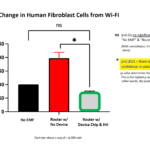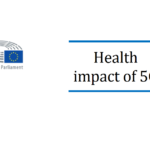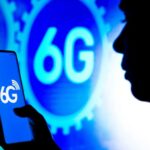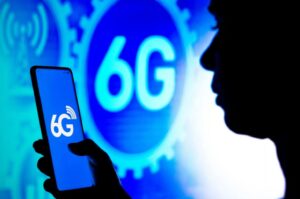HUGE NEWS!
This study shows the root cause of how EMFs effect human cells. Products by EMF Solutions were the solutions proven to work in this study, and moreover are the only ones ever proven to work in this type of study (on the root cause effects of EMFs).
Basically an Independent Lab showed…
Root cause of EMFs = Fixed by EMF Solutions = a “1st”
STUDY SUMMARY:
by Head Researcher, Dr Mazivita Maziveyi
Recent decades have seen a sharp increase in the use of electronic devices, smart meters, and other devices that emit extremely low frequency electromagnetic fields (ELF-EMF). LF EMFs are non-ionizing frequencies of energy that exist on the lower spectrum of energy. While some questions have been raised about the potential adverse health effects of EMFs, numerous studies have demonstrated biological changes that result from EMF exposure. These biological changes include alterations in sperm motility, gene expression1, cell growth, and tissue repair.2 Despite strong evidence of changes within cells, the mechanisms of these biological alterations are poorly understood.
Interestingly, dozens of studies have shown that EMF exposures act through the activation of voltage-gated calcium channels (VGCCs), which are responsible for transporting calcium into cells.3 For example, a study by Zhi-cheng Sun, et al4 was the first to demonstrate that exposure to EMFs causes an influx of calcium into neuronal cells. These results make sense since it has been well established that calcium is affected by magnetic fields. Dr. Martin Pall proposed that L-Type VGCCs have the greatest increase in intracellular calcium4. Conversely, EMF exposure can decrease the levels of intracellular calcium when there are other VGCC subtypes, including N-type, P/Q type, and T-type blockers. Further studies are necessary in order to elucidate the mechanisms by which EMFs affect the body.
EMF Solutions is a company that produces EMF remediation products from earth made materials to reduce the toxic load of EMFs. These products work by reducing the subatomic chaos transmitted from EMFs. If these products are effective for remediation, then they should theoretically reverse the intracellular calcium levels brought on by EMF exposure. To test this, I grew skin, liver, breast and colon cells in a cell chamber (37°C, 5% O2) next to a Wi-Fi router and attempted to remediate the environment with products from EMF Solutions. For remediation, the Device Chip was placed in the chamber that the cells were grown in and the XL Home Harmonizer Box was placed behind the cell chamber. As a control, another group of sister cells were observed in another chamber without any remediation. After 24 hours, I observed the levels of intracellular calcium, and the results are shown in Figure 1.
In this study, exposure to EMFs significantly altered the levels of intracellular calcium in skin and breast cells. Impressively, remediation with the products from EMF Solutions was able to reverse the EMF-induced intracellular calcium levels in skin and breast cells. This is a significant finding since skin cells receive direct exposure to the frequencies and breast cells are just under skin tissue. The liver and colon cells, which are within the abdominal cavity, did not have a statistically significant change in EMF-induced intracellular calcium levels, and therefore, remediation had no effect on their calcium levels. This means that remediation with the products from EMF Solutions worked specifically for cells that are affected by EMFs. Taken together, the results from these experiments demonstrate that the Device Chip and XL Home Harmonizer Box effectively normalized calcium levels that were induced by EMF exposure.
_____________________
1 https://pubmed.ncbi.nlm.nih.gov/25918601/
2 https://pubmed.ncbi.nlm.nih.gov/23674517/
3 https://pubmed.ncbi.nlm.nih.gov/23802593/
4 https://www.nature.com/articles/srep21774
FIGURE A:

The significance of this study is that it shows the root cause of EMF effects being fixed in human cells for the first time ever. All of the other 1,000’s of EMF studies are really important but are “cause and effect” studies which do not address the root cause at all. (1)
(1) Dr Martin Pall’s study at the National Library of Medicine and other published articles.
Dr Maziveyi headed the Independent Lab Study showing EMF Solutions’ products working to normalize changes within human cells in 2021. Here’s some info about her credentials:
Dr Mazivita has 18 Publications which are mostly cancer studies, as well as over 1,000 citations. (Citations are when other scientists and researchers officially refer to or quote your work.) See her profile below and an example of just one the many other studies she has done as published on NCBI/Pubmed. She is extremely experienced and has a super impressive track record as a researcher.
Dr Vita’s rating as a researcher:
https://www.researchgate.net/profile/Mazvita-Maziveyi
Example of one of the many other studies by Dr Mazivita (on Pubmed/NCBI):
https://www.ncbi.nlm.nih.gov/pmc/articles/PMC5564663/
EMF & Human Cell Study Summary on Dr Carrie Madej’s site:
https://www.dropbox.com/s/yzm2el6hp7pyhw7/Dr%20Vita%20EMFs%20on%20Human%20Cells%20Study%20Summary.docx?dl=0 …or go directly to Dr Carrie’s site at https://www.carriemadej.com/resources then click on “New EMF Study”










